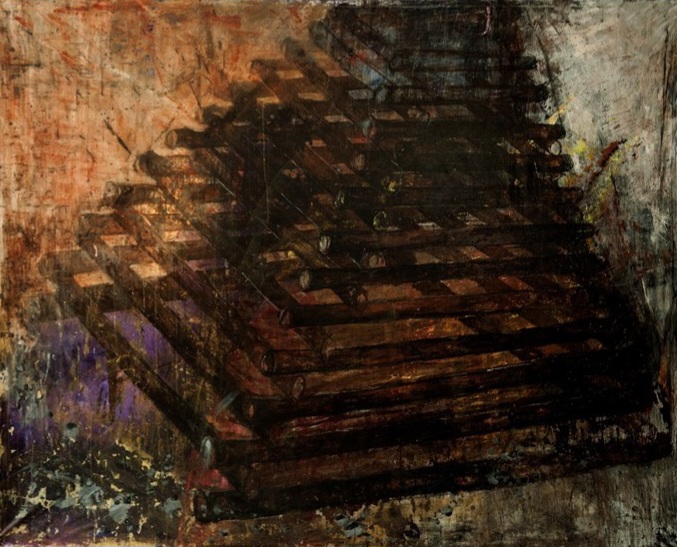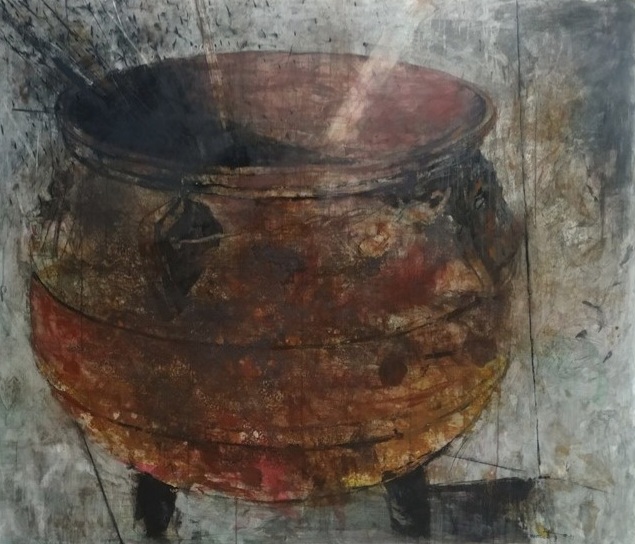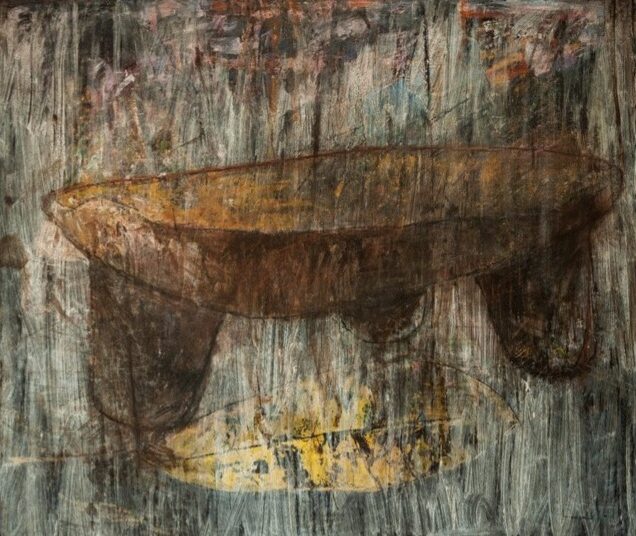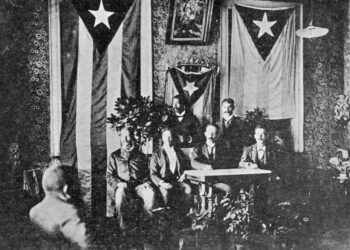Una visita a la caverna (A Visit to the Cave), the most recent painting exhibition by Arturo Montoto (Pinar del Río, 1953), seven large-format pieces in the dark aesthetic of some of his work, only confirms the hierarchy of someone who, without fanfare, has been part of the Cuban artistic avant-garde for years.
Best known — and even preferred by a broad segment of the public — for his works in which urban buildings and fruit intermingle to form surrealist associations, as brilliant in color as they are precise in their execution, since the 1990s he has begun creating pieces in which implements, tools and everyday objects take center stage.
I think I associated that line of his work back then with that memorable poem by Eliseo Diego that spoke of the “tools of man.” Those and these are the works he now exhibits at the Casa de la Cultura in Plaza, paintings of remarkable ease in drawing, with solutions that are more graphic than pictorial, enveloped in an abstract atmosphere of blurred and gestural backgrounds.

The objects Montoto creates represent the material side of past existences, traces left by human beings throughout their lives and recycled through artistic gestures.
But not only that. In every home, there is a pot that has been used for more than three generations, or a mother-of-pearl box where the girl who was once the grandmother kept her trophies from various amorous battles. “Lived” things are charged with an energy and meaning that modernity, increasingly fleeting, cannot bury. This applies equally to a Palo Monte nganga (“Sortilegio”) as it does to a Mexican molcajete (“Consagración”).

Montoto knows this. His artistic operation is not nostalgic, but affirmative. He falls in love with the figures of everyday objects that seem stylized to us today, not because of their vintage flavor, but because they speak of a time when utility and beauty went hand in hand, and because from their origins, their mission was, ultimately, to endure.
Does the cave in the exhibition’s title have anything to do with Plato’s allegory? Remember that for this philosopher, the ideal was to capture with equal accuracy the sensible world and the intelligible world, something like what is felt and what can be reasoned.
I can’t help but relate Montoto’s work to this formulation, since the almost realistic quality of his paintings is not limited to that — to representing a given object with more or less artistic veracity as we perceive it — but also reveals the intrinsic meaning of what is represented, something that challenges us in an inexcusable way.
The term “cave” can also allude to the primal ages of human beings and the supposed precariousness in which they lived. Precariousness from the perspective of the present, of course.
The recently renovated Casa de la Cultura in Plaza de la Revolución aims to rescue its rich tradition with first-class exhibitions and activities. And this exhibition by Arturo Montoto is a firm step in that direction.
For the artist, Una visita a la caverna represents a reunion with admirers and friends after two years away from the country’s galleries. His previous solo exhibition, Ilusiones perdidas, at Artis 718 gallery in 2023, also incurred that deep-rooted tenebrism where color is absent, in favor of concentrating the gaze on the essence of what is represented.
It’s an exhibition not to be missed.
What: Una visita a la caverna, a painting exhibition by Arturo Montoto
Where: Casa de la Cultura in Plaza de la Revolución, Calzada and 8th Street, Vedado
When: Until the end of August. Monday to Saturday, 10 a.m. to 4:00 p.m.
How much: Free entry










